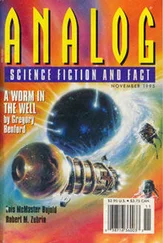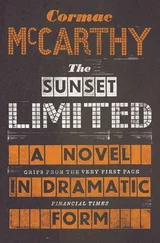“You’ve considered beaming antimuons in to annihilate the contamination?” Bruno inquired.
“Of course,” Marlon replied. “Simulations indicated that the resultant gamma radiation would destabilize the lattice almost as rapidly as gravitic radiation. Our one limited experiment matched the predictions perfectly, so I saw little point in pursuing the matter further.”
“What’s the half-life of the particles?”
“Half-life? Most of them are gone already; they’d‘ve decayed almost immediately. It’s only the ones that fell into orbits around the collapson nodes that lingered, and most of those are gone as well. It’s only the ones that fell in close that remain, all swollen with relativistic mass. So the half-life was probably about a second, although I don’t think that’s what you’re really asking. What you want to know is when the remaining muons will be decayed and gone, or close enough to gone that the Ring Collapsiter’s lattice structure regains stability.”
“You see through the murk of my thoughts,” Bruno agreed.
“Well, unfortunately, I don’t have an answer. Again, there are too many variables to construct an accurate prediction. I can guess intelligently: the maximum stable orbit for a particle around a neuble-mass black hole is around a third of the way to the next node in the lattice, a little over one centimeter. Any further than that and the particle will simply be ejected, or else captured by a neighboring hole. The minimum stable orbit is around 1.14 proton radü, and that’s where the long-lived particles mostly are. That would put the orbital velocity within, let’s see…”
He tapped some calculations into his slate; they appeared, solved, on Bruno’s own. “That puts them at about seventy percent of light speed,” Marlon said, “which would mean only minor time dilation if they weren’t sitting in this tremendous gravity field. The gravitational time dilation factor would be… three times ten to the thirteenth. At that rate, a muon’s lifetime would be—” He tapped some more numbers in. “—three times ten to the seventh seconds. Very approximately, of course.”
He began with the basics: a standard collapsium lattice with its cube-shaped nodes spaced a little more than two centimeters apart. Denser and looser arrangements were possible; all manner of crystalline symmetries, hexagonal and gyroidal and orthorhombic, with stability islands occurring like spectral lines, seemingly random, at a number of different scales. But that one was the “standard” composition, the one he’d selected for the Iscog’s first primitive collapsiters. By chance? By intuition? Many other crystals had been tried over the years, but that one still yielded the greatest blending of stability and mechanical/industrial usefulness.
This zpf-damping foam, though, would need to be a thousand times denser. Were there stability islands anywhere in the proper range for the foam to work? He crafted a series of simulations to confirm it, then backed them up with a rigorous mathematical proof. But the foam’s structure was another major problem—not a simple lattice at all, but something more akin to a quasicrystal of supercooled fluid packets, spiderwebbed in four dimensions. A vacuogel hypercollapsite? More math was needed to prove that wasn’t a ridiculous idea. He fretted through the whole process, gnawing absently on the end of his thumb, but one by one the answers all came back affirmative: the material was physically possible.
Relieved, he called for a toilet, some coffee, a weed pipe, and a tray of bagels, then indulged in a few minutes of stretching and smoking and refueling his body before diving back in to tackle the issues of construction. Were there valid intermediate states the collapsium could pass through to reach the hypercollapsite state? A proof confirmed that there ought to be, but he needed a whole chain of them—stepping stones from the large and simple to the tiny and intricate— and his initial searches turned up only a single state on anything like the proper pathway.
He grumbled and fretted for a while, converting greater and greater swaths of his study walls into hypercomputer blocks. Finally, when the entire room—right down to the floor beneath his feet—was one giant computing device, he hit on a prime-number sorting algorithm that enabled the wellstone to spit out the whole series for him in the space of an hour. It even pointed to some alternate reaction paths and a handful of quite interesting dead-ends that he resolved to investigate further when time permitted.
The robots sneaked in with more food and drink, which he paused once more to consume, and then fell—most unwillingly—asleep.
Antiautomata(adj) Describes any weapon intended for use against robots.
Arc de fin (n) A hypothetical device for diverting photons from the fourth-dimensional extremum of spacetime. Attributed to Bruno de Towaji.
Archimedes(prop, n) Greek physicist from the Classical era.
All(n) Astronomical Unit; the mean distance from the center of Sol to the center of Earth. Equal to 149,604,970 kilometers, or 499.028 light-seconds.
Autronic(adj) Capable of self-directed activity. Commonly used to differentiate robots from teleoperated or “waldo” devices.
Blitterstaff(n) An antiautomata weapon employing a library of rapidly shifting wellstone compositions. Attributed to Bruno de Towaji.
Bondrll(n) Copyrighted wellstone substance employed as a glue. Much stronger than atomic glues.
Bunkerlite(n) Copyrighted, superreflective wellstone substance employed as protective cloth or armor. Attributed to Marlon Sykes.
Caslmir, Hendrick(prop, n) Dutch physicist of the Old Modern era.
Casimir effect(n) The exclusion of vacuum wavelengths by closely spaced, uncharged, conducting plates, causing the plates to be pressed together. Earliest evidence of the zero-point field.
Catalonia(prop, n) Former Mediterranean nation at the northeast of the Iberian peninsula, historically a part of Spain.
Centroid(n) The geometric center of an object or figure.
Cerenkov, Pavel(prop, n) Russian physicist-laureate of the Old Modern era.
Cerenkov blue(n) Characteristic spectrum of electron-emitted Cerenkov radiation.
Cerenkov radiation(n) Electromagnetic radiation emitted by particles temporarily exceeding the local speed of light, e.g., upon exit from a collapsium lattice.
Chromopause(n) The outer surface of a stellar chromosphere.
Chromosphere(n) A transparent layer, usually several thousand kilometers deep, between the photosphere and corona of a star, i.e., the star’s “middle atmosphere.” Temperature is typically several thousand kelvins, with roughly the pressure of Earth’s atmosphere in low Earth orbit.
Cislunar(adj) Within the gravitational sphere of influence of the Earth/Moon system.
Collapsiter(n) A high-bandwidth packet switching transceiver composed exclusively of collapsium. Attributed to Bruno de Towaji.
Collapsium(n) A rhombohedral crystalline material composed of neuble-mass black holes. Since the black holes absorb and exclude a broad range of vacuum wavelengths, the interior of the lattice is a Casimir supervacuum. See Appendix A: Collapsium, pg. 361. Attributed to Bruno de Towaji.
Collapson(n) A cubic structure of eight neuble-mass black holes in sympathetic pseudo-zitterbewegung vibration. The most stable collapsons measure 2.3865791101 centimeters edge to edge.
Читать дальше












